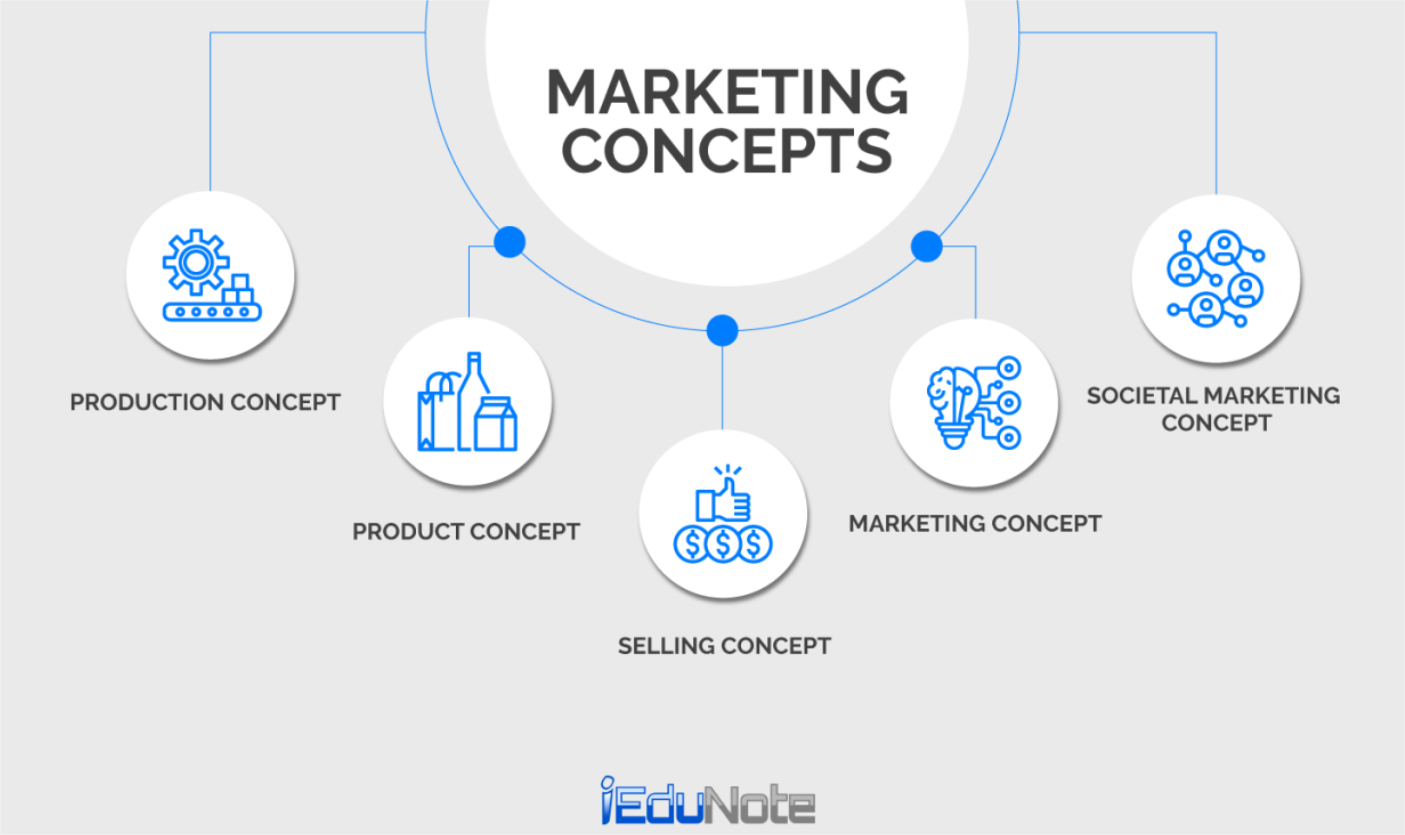This was a classic problem we’ve all faced in school and university: “Theory is great, but how does this help me in real life?” Among the zillions of such concepts out there, five core marketing concepts caught our attention.
And we got this slightly more creative idea for today’s blog. And by creative, we mean the “haven’t covered yet” kind of creative. As you know, we like to see things through a different lens—even if that means living on the edge!
So, here’s the deal:
The five core marketing principles are some of the most appreciated philosophical concepts. Marketers have long used them to deliver long-term customer value by acknowledging their needs. The principles help you formulate products and services that meet those needs at a win-win price point.
The real question is—are they actually applicable to your email marketing?
Yes, absolutely.
From seasoned email marketers to those just dipping their toes into email marketing, these concepts can help you create winning email newsletter templates that appeal to buyers’ pain points, ice out the competition, increase sales, and establish connections with your audience. Let’s learn how.
What are the 5 Core Marketing Concepts?
The term “Core marketing concepts” refers to the marketing philosophies that help a brand build marketing strategies to market its products better. These five key concepts form the core of marketing:

1. The Production Concept
The production marketing concept is simple: consumers prefer buying products that are affordable and readily available on the market.
The reverse is also true: products that are either too hard to find or too expensive are less desirable to consumers.
Think about it—if you see a special edition dress priced at $500, you might hesitate, especially if it’s unavailable at your local stores. But if that same dress were just $50 and found in shops, you’d grab it quickly.
A classic use of customers’ immediate gratification.
It’s also correct to say that this is essentially the idea of mass production. Like any mass-produced item, the concept asks to sell to a large customer base in high volumes. Even if the item is sold at a low profit margin, high-volume selling keeps the profits substantial. That’s why you often get products at such low prices on Amazon.
Businesses that want to implement the product concept must increase production efficiency and expand distribution channels.
2. The Product Concept
The product concept dictates the process of designing and launching new products or features. It prioritizes delivering quality and features that benefit customers.
By focusing on product quality and useful features, brands can increase product prices without losing sales.
That’s because product-focused customers are willing to pay more for superior quality, innovation, convenience, brand name, or uniqueness. In fact, a brand with a strong product marketing concept can charge more than its competitors.
Take Tesla, for instance.
They disrupted the automotive market by prioritizing electric vehicles that deliver on sustainability, performance, and advanced technology. This product concept has earned the brand a loyal consumer base eager for innovative and eco-friendly transportation.
The product concept also dictates ongoing upgrades and improvements to existing products or unique products to satisfy customers’ curiosity about something fresh.
Samsung nailed this by recognizing the demand for larger screens with portability. They launched the S Foldable—a smartphone with a bi-fold design that opens to 7.2 inches. While competitors like LG were still testing foldable tech, Samsung acted quickly, first bringing their product concept to market.
3. The Selling Concept
Almost every business uses the selling concept to sell its products. The approach hinges on the belief that customers tend to resist buying a business’s product unless they are actively persuaded—or, let’s be honest, sold to.
It is often used when businesses have abundant inventory and little to differentiate their products from others on the market.
To make this work, businesses use techniques like incentives, continuous advertising, push-based marketing, and cold calling to make their products seem attractive and desirable so that they can move their products out the door.
In other words, the marketing concept is less about customer needs and more about pushing for a sale, even if it involves using unfair tactics to manipulate buyers.
4. The Marketing Concept
The marketing concept laser focuses a brand’s marketing efforts on creating a better value proposition for customers over time — not just one sale at a time.
It starts with understanding what customers need from your brand, which is what Ann Handley calls “pathological empathy”—a deep, almost obsessive understanding of their problems and preferences.
Every brand activity flows from that. From product to advertising to sales. It’s all rooted in market research. This, in turn, enables you to deliver products that solve their problems and creates a long-term connection between you two. And we all know loyalty equals profits in the long run.
This approach is a game-changer for small brands. With a deep understanding of their audience, they can fill gaps in the market, carve out a niche demand, and stand out against bigger competitors.
For example, Glossier.
Customer prioritization lies at their heart. The brand actively listens to customer feedback and implements them in product development, fostering a sense of co-ownership. Their customizable options and travel-size products came in by catering to the evolving demands of its community.
5. The Societal Concept
The societal marketing concept suggests that businesses should be motivated by more than profits—they should act in the best interests of society.
The philosophy behind this concept is to balance customer needs and brand profits and create a more sustainable future for the coming generations.
With societal marketing, brands can positively impact and build stronger customer relationships. People love supporting businesses that care.
Look at LEGO. They’re not just about building blocks; they’ve partnered with UNICEF to support communities and family programs. Their focus is bringing the power of play into kids’ lives.
How to Apply These Marketing Concepts in Email Marketing?
Now that we’ve covered the five core marketing concepts, how do you use them to build winning email campaigns?
Sure, having a well-defined marketing concept in place helps you achieve your email marketing goals more effectively. But that happens only when you know your goals and audience like the back of your hand.
When you’ve got that clarity, everything from targeting to content creation falls into place. Your subscribers get highly personalized emails—the content meets their requirements and interests them. Otherwise, all you are sending are unspecific, one-size-fits-all emails. The result? Low engagement and an even lower ROI.
The Production Concept + Email Marketing
The production concept proposes product affordability and availability. When applied to email newsletters, it reaches a wide audience with offers that are accessible, appealing, and easy to act on.
Some email newsletter ideas to practice the production concept:
- Bulk Email Campaigns
Send newsletters to large segments of your audience at once. It’s a cost-effective way to reach as many inboxes as possible in a short span. Say during high-demand seasons like Black Friday or the holidays.
Yes, there are pros and cons of mass emails. Mass emails do have their fair share of pros and cons. Do read about some bulk mail best practices so as to stop your emails from landing in spam.
- Clear Pricing and Offers
Keep pricing information front and center of your newsletter. Highlight affordability and create urgency with limited-time offers or flash sales.
For instance, feature discounts that align with the idea of mass appeal—something like, “Final Hours: 25% off sitewide!
- Inventory Alerts
Tap into “instant gratification” by letting your audience know when popular items are restocked or new products are available. They’re more likely to act if they see that the item is affordable and readily available.
- Automated Workflows and Templates
Use email marketing automation to reach customers at scale and keep your messaging consistent. The market is full of tools and high-converting email newsletter templates. Use them for friction-free email production without significantly increasing costs.
The Product Concept + Email Marketing
To integrate the product marketing concept into your email newsletter ideas, show off what makes your product truly special. Here’s how to do that:
- Feature-driven emails
In email copy, highlight your product’s standout features and benefits, but do it in a relatable way. Instead of just listing the features, tell prospects why they matter to them. How does it make their life easier or better?
As in:
This is okay: The ultimate tool for team collaboration.
This is way better: Work together like you’re all in the same room, even when you’re miles apart.
- Personalized product recommendations
You have access to dashboards filled with data and metrics. Use them to send tailored product recommendations. This makes your emails feel relevant and personal, which adds perceived value.
- Demo and tutorial emails
Show, don’t tell! If your product has unique features or requires some learning, send tutorial videos, step-by-step guides, or product demos in your emails. Show your subscribers how to use your product to its full potential.
- High-quality visuals
78% of shoppers consider product images “extremely important” when making a purchase, illustrating why you must include them in your emails. Use images and videos to showcase the craftsmanship, design, or key features to highlight the quality.
- Customer testimonials
Nothing builds credibility like happy customers—72% of shoppers rely on them for online purchases. Showcase positive customer reviews in your emails to build trust and reassure your audience that your product delivers.
- Regular updates and new features
Get your subscribers stoked about updates, new features, or upcoming product launches. Try different types of product update emails to create anticipation and keep your product top-of-mind for subscribers.
The Selling Concept + Email Marketing
The goal of leveraging the selling concept in email newsletters is to drive quick action through urgency and persuasive messaging.
Important>> The selling concept can be pushy. But ensure you respect your customers’ preferences. Keep the balance so your emails drive action without feeling overwhelming.
Here’s how you can do it effectively:
- Promote Special Offers
Use emails to showcase discounts, limited-time deals, or seasonal promotions that grab attention. Promote them as a “hard-to-miss-out” opportunity to encourage immediate purchases.
- Create Urgency
Leverage countdown timers or mention limited stock to trigger FOMO.
- Offer Incentives
Use exclusive discounts or loyalty points to reward customers for repeat purchases.
The Marketing Concept + Email Marketing
To leverage the marketing concept in your email newsletters, focus on understanding your customers’ needs and creating lasting value for them rather than just pushing for a sale. Here’s how:
- Segment your email lists
Use customer data to divide your audience based on demographics, behaviors, or preferences. Segmenting your mailing list enables email content to cater to each group’s specific interests.
- Customer-centric approach
Make your email newsletter all about your audience. Address their pain points and desires with personalized offers, helpful tips, or relevant product recommendations.
- Gather customer feedback
Request customer feedback by embedding surveys and polls in your emails. It’s a perfect tool to learn customer behaviors and actionable insights. It enhances email engagement and demonstrates that you care about your customers’ experiences.
- Utilize social listening
Monitor conversations on social media to catch wind of customer pain points. Then, craft email newsletter ideas that respond to these insights.
The Societal Concept + Email Marketing
The societal concept inspires the creation of email newsletters that resonate with socially conscious customers. Here’s how to weave that into your email strategy:
- Highlight your social responsibility efforts
Showcase how your company supports sustainable practices, ethical sourcing, or community engagement through email newsletters.
- Launch CSR campaigns
Consider running email campaigns focused on your brand’s CSR initiatives. These could be partnerships with local charities, commitments to reducing carbon emissions, or any other undertaking. Share these stories and get your readers involved.
- Cause-based email marketing
Create promotions where a percentage of sales goes to a specific cause. Make it clear in your emails how their purchase can make a difference.
- Share impact stories
Use your newsletters to highlight how your brand has positively impacted society. This could be through community projects, environmental efforts, or any initiatives that align with your mission.
- Spotlight partnerships and collaborations
If you work with non-profits or social causes, feature these partnerships in your emails. And encourage your audience to support these initiatives.
- Emphasize ethical sourcing
Let your customers know if your products are made from ethically sourced materials or if you practice fair trade.
- Case studies
Feature case studies about the difference you made in the community.
Key Takeaways
| Production Concept |
|
| Product Concept |
|
| Selling Concept |
|
| Marketing Concept |
|
| Societal Concept |
|
In Conclusion: The Marketing Concepts Inspire A Lot to Email About
Applying core marketing concepts to your email newsletters drives better engagement, builds loyalty, and delivers customer-focused outcomes. Hopefully, this perspective inspires you to approach email marketing with more innovative strategies.




